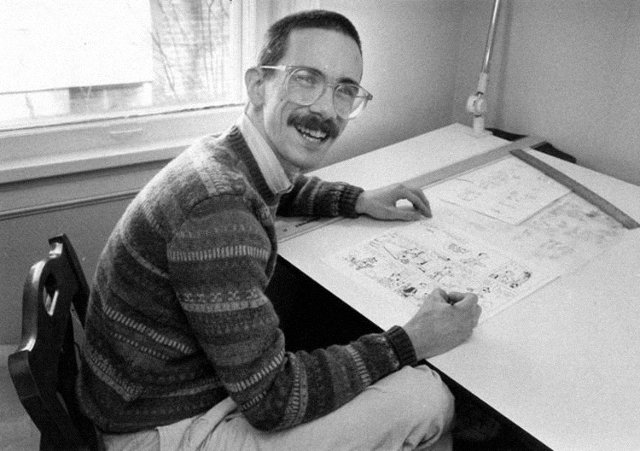4 Tips On Creativity From The Creator Of Calvin & Hobbes
Bill Watterson, the creator of the comic strip Calvin & Hobbes, is famously media-averse. He’s given two interviews, total since he retired his strip in 1995. Reporters have staked out his home in Ohio to no avail. The man just prefers not to be a public figure. But in the documentary Stripped (which you can buy or rent on iTunes), Watterson not only gives an interview, he drew the art for the poster–the first Watterson cartoon to be published in nearly 20 years.
Stripped features interviews with just about every major cartoonist still alive, including Cathy Guisewite (Cathy), Bill Amend (Foxtrot), Stephan Pastis (Pearls Before Swine), Jim Davis (Garfield), Mort Walker (Beetle Bailey), and a host of web comic artists, including Kate Beaton (Hark, A Vagrant!), Matt Inman (The Oatmeal), and many more. But the coup is assuredly Watterson (even though only his voice is in the movie.)

Watterson is the creator of one of the most beloved pieces of comic art, and most of his fans have probably never heard him speak before. He turns out to be much like you’d expect: thoughtful, articulate, with an artist’s mentality, but extremely firm in his beliefs. Watterson is known for refusing to compromise his vision of his work. He demanded a change to the Sunday page, for example, to make room for larger art. He refused to license his work, which is why you’ve never seen a Calvin & Hobbes movie or even an official Calvin & Hobbes T-shirt. He retired at the height of his popularity, after only 10 years–a short time for comic strip artists (Garfield, for example, has been eating lasagna and hating Mondays for 36 years). His retirement letter to newspaper editors was brief and said, in part, “I believe I’ve done what I can do within the constraints of daily deadlines and small panels. I am eager to work at a more thoughtful pace, with fewer artistic compromises.”
Here are four tips about the creative process that Watterson reveals in the film:
1. You Have To Lose Yourself In Your Work
“My comic strip was the way that I explored the world and my own perceptions and thoughts. So to switch off the job I would have had to switch off my head. So, yes, the work was insanely intense, but that was the whole point of doing it.”
2. Create For Yourself
“Quite honestly I tried to forget that there was an audience. I wanted to keep the strip feeling small and intimate as I did it, so my goal was just to make my wife laugh. After that, I’d put it out, and the public can take it or leave it.”

3. Make It Beautiful
“My advice has always been to draw cartoons for the love of it, and concentrate on the quality and be true to yourself. Also try to remember that people have better things to do than read your work. So for heaven’s sake, try to entice them with some beauty and fun.”
4. Every Medium Has Power
“A comic strip takes just a few seconds to read, but over the years, it creates a surprisingly deep connection with readers. I think that incremental aspect, that unpretentious daily aspect, is a source of power.”
What could be more inconsequential than a comic strip? Four or five static panels, minimal movement, a quick punchline. Yet Watterson (and many other comic strip artists) have managed to create incredible, meaningful worlds, worlds that are genuinely important to the people who read them. There’s no such thing as a small medium.
Source: http://www.fastcodesign.com/3027095/4-tips-on-creativity-from-the-creator-of-calvin-hobbes?partner=rss
